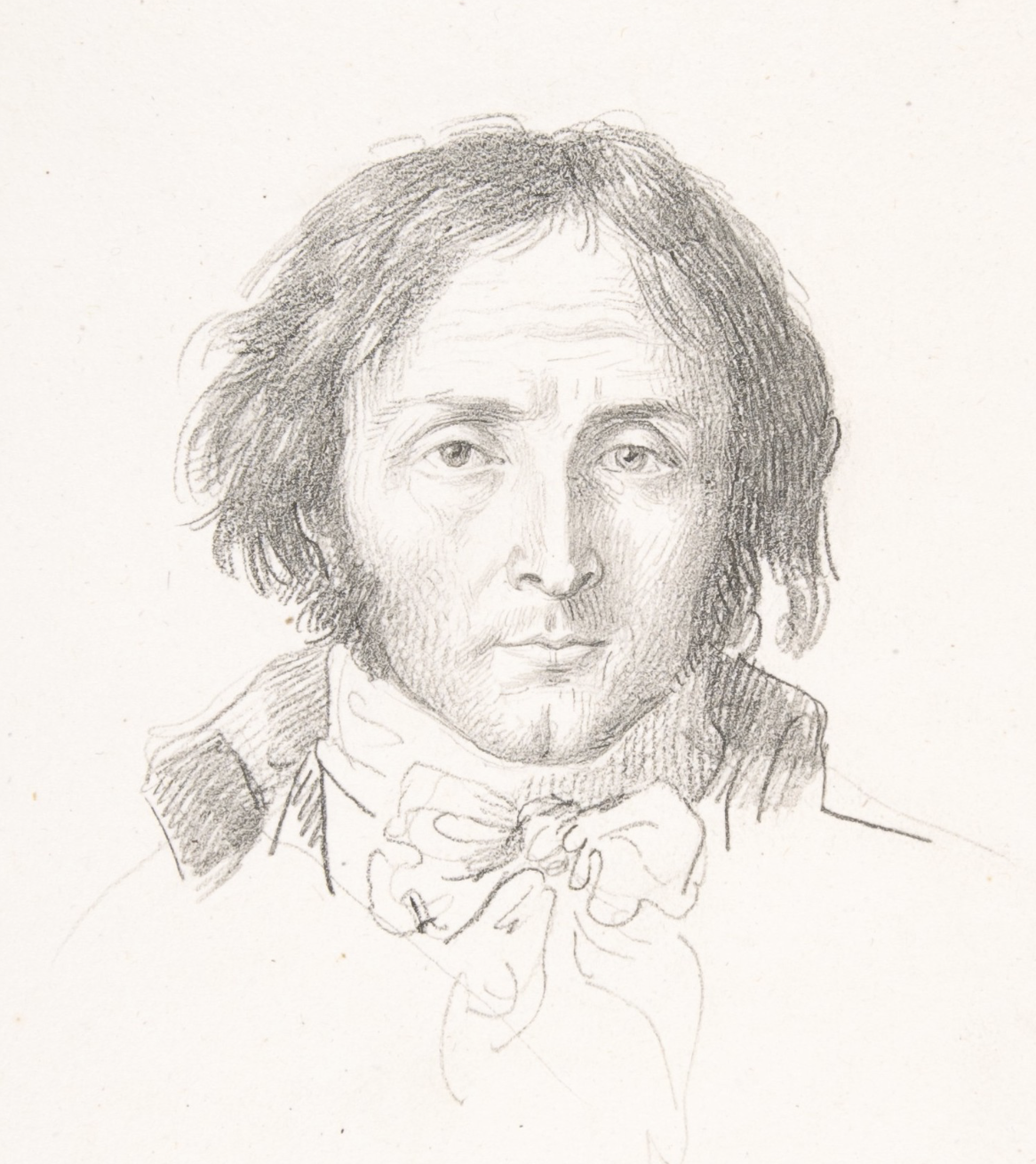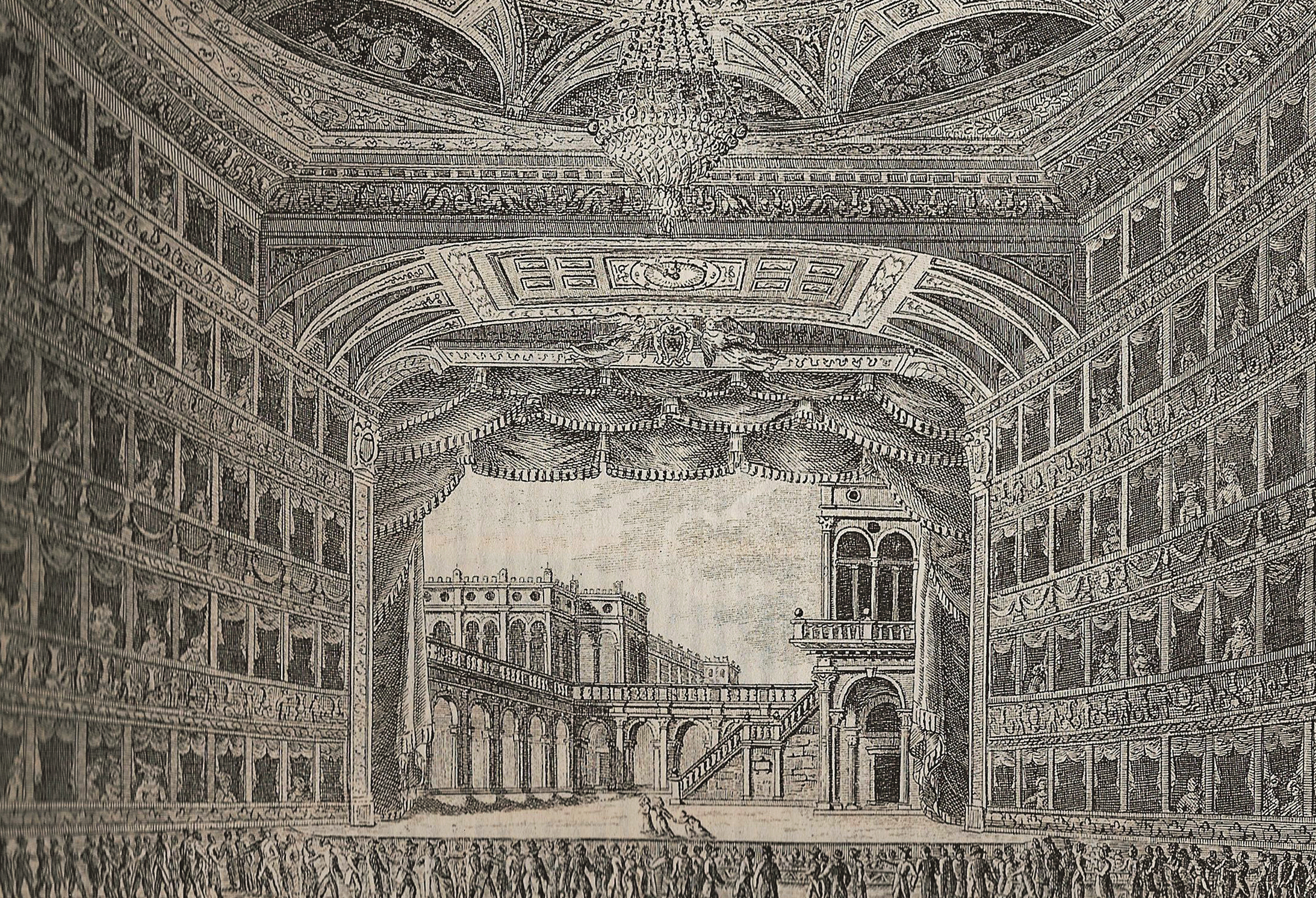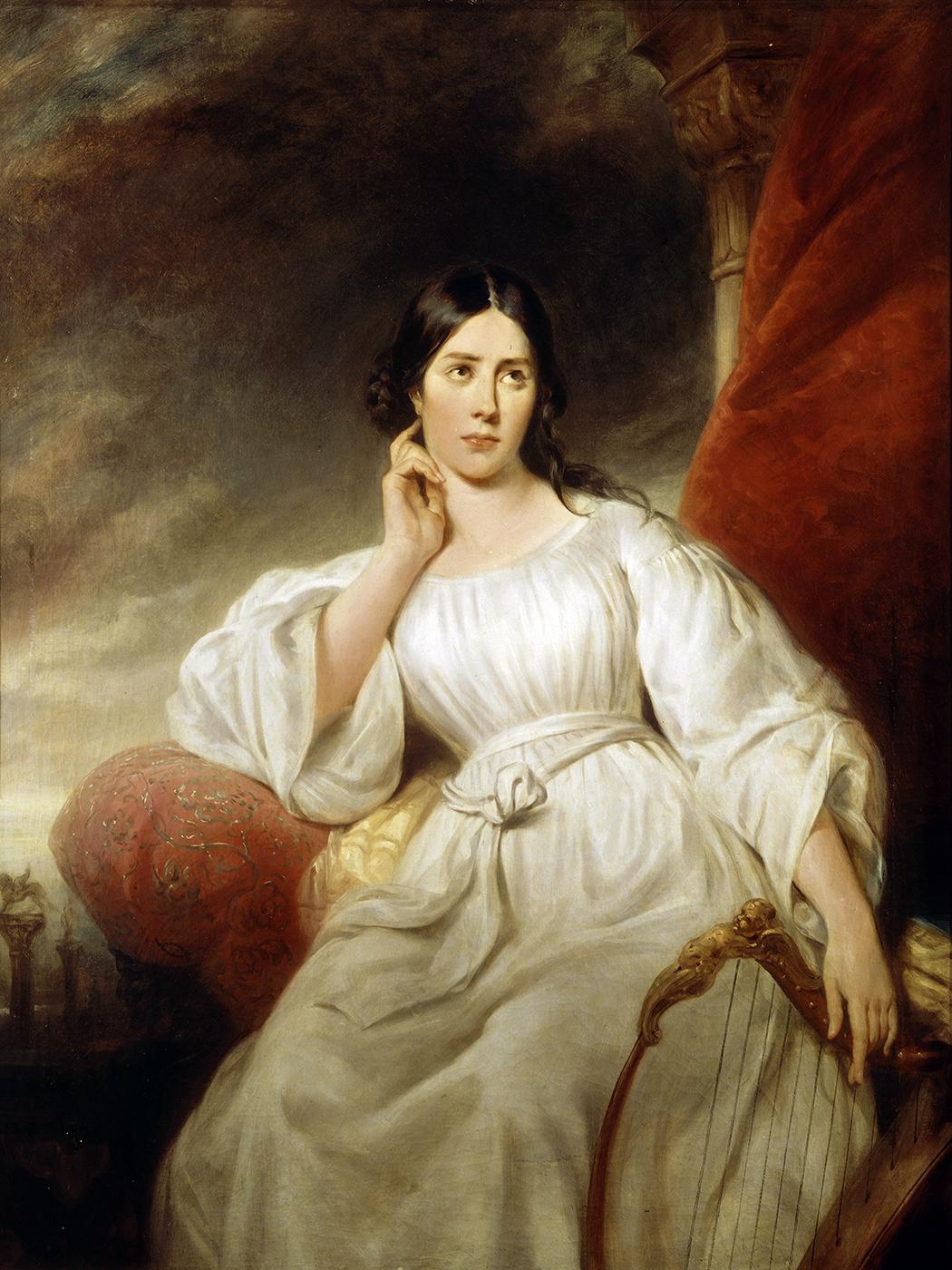|
Semiramide
''Semiramide'' () is an opera in two acts by Gioachino Rossini. The libretto by Gaetano Rossi is based on Voltaire's tragedy ''Sémiramis (tragedy), Semiramis'', which in turn was based on the legend of Semiramis of Assyria. The opera was first performed at La Fenice in Venice on 3 February 1823. ''Semiramide'' was Rossini's final Italian opera and according to Richard Osborne, "could well be dubbed ''Tancredi Revisited''". As in ''Tancredi'', Rossi's libretto was based on a Voltaire tragedy. The music took the form of a return to vocal traditions of Rossini's youth, and was a melodrama in which he "recreated the baroque tradition of decorative singing with unparalleled skill". The ensemble-scenes (particularly the duos between Arsace and Semiramide) and choruses are of a high order, as is the orchestral writing, which makes full use of a large pit. After this splendid work, one of his finest in the genre, Rossini turned his back on Italy and moved to Paris. Apart from ''Il viag ... [...More Info...] [...Related Items...] OR: [Wikipedia] [Google] [Baidu] |
Gioachino Rossini
Gioachino Antonio Rossini (29 February 1792 – 13 November 1868) was an Italian composer of the late Classical period (music), Classical and early Romantic music, Romantic eras. He gained fame for his 39 operas, although he also wrote many songs, some chamber music and piano pieces and some Church music, sacred music. He set new standards for both comic and serious opera before retiring from large-scale composition while still in his thirties, at the height of his popularity. Born in Pesaro to parents who were both musicians (his father a trumpeter, his mother a singer), Rossini began to compose by the age of twelve and was educated at music school in Bologna. His first opera was performed in Venice in 1810 when he was 18 years old. In 1815 he was engaged to write operas and manage theatres in Naples. In the period 1810–1823, he wrote 34 operas for the Italian stage that were performed in Venice, Milan, Ferrara, Naples and elsewhere; this productivity necessitated an alm ... [...More Info...] [...Related Items...] OR: [Wikipedia] [Google] [Baidu] |
Giulia Grisi
Giulia Grisi (22 May 1811 – 29 November 1869) was an Italian opera singer. She performed widely in Europe, the United States and South America and was among the leading sopranos of the 19th century. Her second husband was Giovanni Matteo Mario de Candia (also known as "Mario the Tenor"), scion of a noble family of the Kingdom of Sardinia. She is buried at Père Lachaise Cemetery in Paris. Her grave is marked "Juliette de Candia", styled in her married last name; usually better known by the courtesy title the Marquesse of Candia. Early life Born in Milan, Giulia Grisi was the daughter of Gaetano Grisi, one of Napoleon's Italian officers, and Giovanna née Grassini. She came from a musically gifted family, her maternal aunt Giuseppina Grassini (1773–1850) being a favourite opera singer both on the continent and in London. Her older sister, Giuditta and her cousin Carlotta were both performing artists, the former as a singer and the latter as a ballet dancer. Giuditta was t ... [...More Info...] [...Related Items...] OR: [Wikipedia] [Google] [Baidu] |
Semiramis
Semiramis (; ''Šammīrām'', ''Šamiram'', , ''Samīrāmīs'') was the legendary Lydian- Babylonian wife of Onnes and of Ninus, who succeeded the latter on the throne of Assyria, according to Movses Khorenatsi. Legends narrated by Diodorus Siculus, who drew primarily from the works of Ctesias of Cnidus,Diodorus Siculus: The Library of History, Book II, Chapters 1-22 describe her and her relationships to Onnes and King Ninus. Armenians and the Assyrians of Iraq, northeast Syria, southeast Turkey, and northwest Iran still use ''Shamiram'' and its derivative ''Samira'' as a given name for girls. The real and historical Shammuramat, the original Akkadian form of the name, was the Assyrian wife of Shamshi-Adad V (ruled 824 BC–811 BC). She ruled the Neo-Assyrian Empire as its regent for five years, before her son Adad-nirari III came of age and took the reins of power. She ruled at a time of political uncertainty, which may partly explain why Assyrians may have accepted ... [...More Info...] [...Related Items...] OR: [Wikipedia] [Google] [Baidu] |
Tancredi
''Tancredi'' is a ''melodramma eroico'' (''opera seria'' or heroic opera) in two acts by composer Gioachino Rossini and librettist Gaetano Rossi (who was also to write ''Semiramide'' ten years later), based on Voltaire's play ''Tancrède (tragedy), Tancrède'' (1760). The opera made its first appearance at the Teatro La Fenice in Venice on 6 February 1813, less than a month after the premiere of his previous opera ''Il signor Bruschino''. The overture, borrowed from ''La pietra del paragone'', is a popular example of Rossini's characteristic style and is regularly performed in concert and recorded. Considered by Stendhal, Rossini's earliest biographer, to be "high amongst the composer's masterworks", and describing it as "a genuine thunderbolt out of a clear, blue sky for the Italian lyric theatre," his librettist Gaetano Rossi notes that, with it, "Rossini rose to glory".Rossi, in Osborne, Richard 2007, p. 199 Richard Osborne proclaims it to be "his fully fledged ''opera seria'' ... [...More Info...] [...Related Items...] OR: [Wikipedia] [Google] [Baidu] |
Gaetano Rossi
Gaetano Rossi (; 18 May 1774 – 25 January 1855) was an Italian opera librettist for several of the well-known ''bel canto''-era composers including Gioachino Rossini, Gaetano Donizetti, and Saverio Mercadante in Italy and Giacomo Meyerbeer in one of his early Italian successes. Other composers with whom he worked included Simon Mayr, a composer and Donizetti's teacher, as well as the prolific Giovanni Pacini. Biography Born in Verona, Rossi was writing religious verse by the time that he was 13 years old. He wrote libretti for about 60 years, beginning in 1797 with mostly farsas. Rossi wrote the texts for some significant operas by the well-known composers of the era. These included ''Tancredi'' and ''Semiramide'' for Rossini and '' Il crociato in Egitto'' for Meyerbeer, as well as later operas for Donizetti such as ''Maria Padilla'' (as co-author) and ''Linda di Chamounix''. In addition to his writing, he also worked for a time as the stage director for the Teatro Filarmoni ... [...More Info...] [...Related Items...] OR: [Wikipedia] [Google] [Baidu] |
Sémiramis (tragedy)
''Sémiramis'' (1746) is a tragedy in five acts by Voltaire, first performed in 1748 and published in 1749. Action Act 1 The plot is very similar to that of Voltaire's earlier unsuccessful tragedy '' Ériphyle''. The action takes place in a courtyard in front of the palace of Sémiramis in Babylon, in front of the Hanging Gardens. Sémiramis, after having her husband Ninus poisoned, now rules the Babylonian Empire. Ninus had previously given his son Ninias to the old man Phradate. The son grew up as Arsace in Scythia and returns to Babylon 15 years after the murder. At his father's coffin he hears his voice demanding revenge. – Sémiramis has been plagued by Ninus’ ghost for months. Act 2 The queen hates Assur - he in turn wants to be king and rule together with Azéma as his wife. In order to find out the will of the gods, Sémiramis obtained an oracle: a second wedding should calm Ninus in his grave. In a confidential conversation she reveals to Assur her intention to share ... [...More Info...] [...Related Items...] OR: [Wikipedia] [Google] [Baidu] |
Teatro Dell'Opera Di Roma
The Teatro dell'Opera di Roma (Rome Opera House) is an opera house in Rome, Italy. Originally opened in November 1880 as the 2,212 seat ''Costanzi Theatre'', it has undergone several changes of name as well modifications and improvements. The present house seats 1,560. Original Teatro Costanzi: 1880 to 1926 The Teatro dell'Opera was originally known as the ''Teatro Costanzi'' after the contractor who built it, (1819–1898). It was financed by Costanzi, who commissioned the Milanese architect Achille Sfondrini (1836–1900), a specialist in the building and renovation of theatres. The opera house was built in eighteen months, on the site where the house of Heliogabalus stood in ancient times, and was inaugurated on 27 November 1880 with a performance of ''Semiramide'' by Gioachino Rossini. Designing the theatre, Sfondrini paid particular attention to the acoustics, conceiving the interior structure as a "resonance chamber", as is evident from the horseshoe shape in particular. W ... [...More Info...] [...Related Items...] OR: [Wikipedia] [Google] [Baidu] |
Voltaire
François-Marie Arouet (; 21 November 169430 May 1778), known by his ''Pen name, nom de plume'' Voltaire (, ; ), was a French Age of Enlightenment, Enlightenment writer, philosopher (''philosophe''), satirist, and historian. Famous for his wit and his criticism of Christianity (especially Criticism of the Catholic Church, of the Roman Catholic Church) and of slavery, Voltaire was an advocate of freedom of speech, freedom of religion, and separation of church and state. Voltaire was a versatile and prolific writer, producing works in almost every literary form, including Stageplay, plays, poems, novels, essays, histories, and even scientific Exposition (narrative), expositions. He wrote more than 20,000 letters and 2,000 books and pamphlets. Voltaire was one of the first authors to become renowned and commercially successful internationally. He was an outspoken advocate of civil liberties and was at constant risk from the strict censorship laws of the Catholic French monarchy. H ... [...More Info...] [...Related Items...] OR: [Wikipedia] [Google] [Baidu] |
La Fenice
Teatro La Fenice (; "The Phoenix Theatre") is a historic opera house in Venice, Italy. It is one of "the most famous and renowned landmarks in the history of Italian theatre" and in the history of opera as a whole. Especially in the 19th century, La Fenice became the site of many famous operatic premieres at which several works by the four major bel canto era composers— Rossini, Bellini, Donizetti, and Verdi—were performed. Its name reflects its role in permitting an opera company to "rise from the ashes" despite losing the use of three theatres to fire, the first in 1774 after the city's leading house was destroyed and rebuilt but not opened until 1792; the second fire came in 1836, but rebuilding was completed within a year. The third fire was the result of arson, and destroyed the house in 1996 leaving only the exterior walls; it was rebuilt and re-opened in November 2004. In order to celebrate this event, the tradition of the Venice New Year's Concert started. H ... [...More Info...] [...Related Items...] OR: [Wikipedia] [Google] [Baidu] |
Isabella Colbran
Isabella Angela Colbran (2 February 1785 – 7 October 1845) was a Spanish opera soprano and composer. She was known as the muse and first wife of composer Gioachino Rossini. Early years Colbran was born in Madrid, Spain, to Giovanni Colbran, King of Spain Carlos III's head court musician and violinist, and Teresa Ortola. She started her musical studies as a singer and composer at the age of six with composer and cellist Francisco Parjea, castrato Carlo Martinelli, and famous castrato and composer Girolamo Crescentini. In 1801, Colbran and her father moved to Paris where she made her concert debut and was warmly received by Napoleon's court. Both of them traveled to Italy, going to Milan, Venice, Rome, before settling and moving permanently to Naples. She inherited land in Sicily and a villa in Castenaso in 1820, after her father's death. Opera career Colbran's dramatic soprano voice and sizable three octave range allowed her to have extremely successful opera career. She ... [...More Info...] [...Related Items...] OR: [Wikipedia] [Google] [Baidu] |
Elisabetta, Regina D'Inghilterra
''Elisabetta, regina d'Inghilterra'' (; ''Elizabeth, Queen of England'') is a ''dramma per musica'' or opera in two acts by Gioachino Rossini to a libretto by Giovanni Schmidt, from the play ''Il paggio di Leicester'' (''Leicester's Page'') by Carlo Federici, which itself "was derived from a novel ''The Recess'' (1785) by Sophia Lee." It was premiered at the Teatro San Carlo in Naples on 4 October 1815 and was the first of nine operas which Rossini wrote for the San Carlo. Altogether, this was one of eighteen operas which he wrote during the time he spent in Naples. Rossini took melodies from other operas to compose ''Elisabetta'', including the overture, first written for '' Aureliano in Palmira'', which is more famous as the overture to ''The Barber of Seville''. As Holden notes, with the re-uses of earlier music, "it is as if Rossini wished to present himself to the Neapolitan public by offering a selection of the best music from operas unlikely to have been revived in ... [...More Info...] [...Related Items...] OR: [Wikipedia] [Google] [Baidu] |
Otello (Rossini)
''Otello'' is an opera in three acts by Gioachino Rossini to an Italian libretto by after William Shakespeare's play '' Othello, or The Moor of Venice''; it was premiered in Naples, Teatro del Fondo, 4 December 1816. The plot of the libretto differs greatly from Shakespeare's play in that it takes place wholly in Venice, not mainly on Cyprus, and the dramatic conflict develops in a different manner. The role of Iago is much less diabolical than Shakespeare's play or Verdi's 1887 opera ''Otello'', which was also based on it. Shakespeare derived his play from the story ''Un Capitano Moro'' ("A Moorish Captain") by Cinthio, a disciple of Boccaccio, first published in 1565. In further contrast, the role of Roderigo, a sub-plot in Shakespeare and Verdi, is very prominent in Rossini's version—some of the most difficult and brilliant music being assigned to the character Rodrigo. The roles of Otello, Iago, and Rodrigo are all composed for the tenor voice. Rossini's ''Otello'' is ... [...More Info...] [...Related Items...] OR: [Wikipedia] [Google] [Baidu] |









